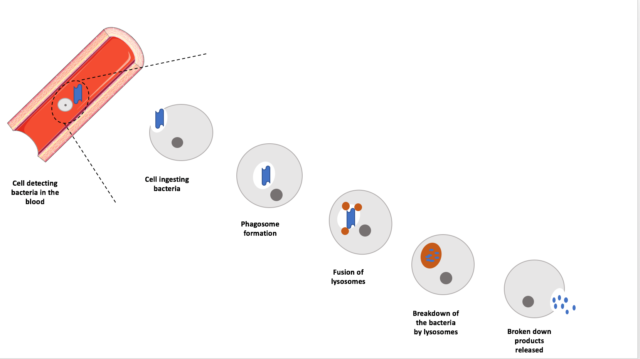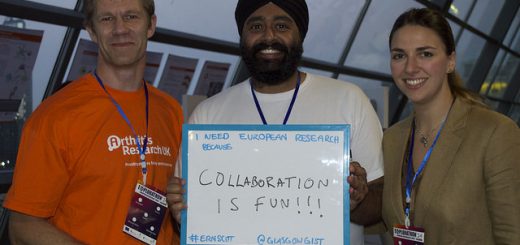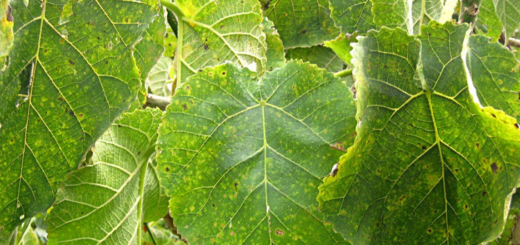What Makes Some Food Fatal?

Why can something essential for keeping us alive also be fatal?
Food is a fundamental part of our daily lives; it’s something many of us come into contact with at least 3 times per day, and it’s the thing most social gatherings are centred around. For most of us, it’s a daily source of joy, and we can’t go long without it (hanger, am I right?). Yet, for approximately 3% the population (which equates to an enormous 210 million people!) food can be a major source of stress and anxiety due to food allergies. This is a major global health issue and incidences appear to be on the rise.
Food allergy can manifest itself in many ways: in some people, it causes vomiting, in others, a rash, and in the most severe cases it can be life-threatening. Luckily, for most people affected, they suffer milder symptoms, such as sickness and skin irritation which are often easily managed. However, 1 in 1000 people suffer severe forms of food allergy which are potentially deadly.
Why does this happen?
Let’s start off with how our immune system functions normally – it exists to protect us from harmful invaders, such as bacteria and viruses. We have a range of cells with different mechanisms to fight these invaders. These cells circulate in our body through our blood, and if an invader is found, they work together to attack it. Every cell/pathogen has a unique combination of proteins on its surface which allow identification by the immune system. It is these proteins which allow our immune system to recognise an invader. Important to note is that our immune system is made up of two parts – referred to as innate and adaptive. The innate immune system is what we are born with, and this is involved in the primary, non-specific, response to any foreign invader. On the other hand, our adaptive immune system develops over the course of our lives, and it learns to mount a specific response from the pathogens it encounters. Cells from our innate immune system can tackle an invader through simple mechanisms, such as engulfing and ‘eating’, otherwise known as phagocytosis. During this process, molecules called antigens are released, which are picked up by cells of our adaptive immune system. One such adaptive immune cell is a B cell, and this produces antibodies that are made to recognise the antigen that they’ve just been presented. The generation of antibodies means that if the same foreign pathogen was to enter the body a second time, it will be recognized by the immune system, and it will, therefore, respond quicker than before. This is immune memory and an example of why something like chicken pox is unlikely to affect you twice.

You may be thinking that food is essentially made up of foreign proteins that our immune system can respond to? Interestingly, our gut, which comes into contact with food every day, has the most abundant collection of immune cells of our whole body. The reason we do not react to the foods we eat every time is because our immune system has a mechanism called tolerance. This simply means that the immune system is educated to recognise food antigens as normal, and there should be no response mounted against it.
A food allergy is an overreaction of our immune system – there is a breach of the tolerance mechanism, and the immune system mounts a response to the harmless invader, food. For an allergic reaction to occur, a person must have
Antibodies, primarily a type called IgE, recognise food antigens, and they have a role in activating other immune cells to get rid of them. Common cells involved in this reaction are mast cells. After activation by antibodies, they release a chemical called histamine. This is the chemical responsible for symptoms in those who suffer hay fever and why antihistamines are a useful medication in those summer months! Primarily, this chemical’s role is to increase the permeability of our blood vessels allowing more immune cells to access the bloodstream to travel and destroy the offending particle. As these mast cells live in the mucous membranes of our body, the release of histamine leads to classic allergic symptoms, such as a runny nose, coughing and wheezing (symptoms those of you with hayfever know all too well!). However, in fatal food allergies, the consequence of increased vascular permeability causes a fall in blood pressure. This drastic decrease in blood pressure is called anaphylaxis or anaphylactic shock. It stops blood reaching the vital organs which causes them to shut down. This type of reaction can take hold terrifyingly quickly, in as little as a few minutes, and can fatal if not treated.
The treatment for anaphylaxis comes in the form of an ‘

So, why are some foods more prone to inducing allergies than others? Out of all foods on the planet, the CDC has quoted that only 8 food items make up 90% of allergy cases in the US! These are eggs, fish, shellfish, milk, wheat, soy, peanuts and tree nuts (including almonds and pecans). Foods such as fish and eggs contain certain toxins and bacteria, such as mercury and salmonella. As humans were evolving, it was important to avoid anything that could be a threat to life. As a result, our immune systems may have mounted more of an immune response to these toxin-containing foods as a way of avoiding the desire to eat them. Allergies, such as nut and soy, tend to have a genetic basis and, thus, are passed on from generation to generation. Additionally, while different in many ways from appearance to taste and smell, what these 8 allergic foods all have in common is the type of proteins they contain. Their proteins remain stable during the process of digestion in the body meaning they are more visible to the immune system than other foods and, thus, susceptible to an immunologic response 3.
It has been reported that food allergies are on the rise, with some even describing it as an epidemic, particularly in the UK. Is this because doctors are getting better at diagnosis, or are there just more people with food allergies? It could actually be a combination of both, but it is more likely the latter. Several factors have been attributed to the development of a food allergy. One such theory is that the age a child is weaned can impact their likelihood to develop an allergy. Research has suggested that if a child begins solid foods too early, they could be more likely to develop a food allergy. This is due to the under-development of the immune system in the gut. Once a child is on solid foods, introducing as much variety of food as early as possible is encouraged, including the introduction of the well-known foods which cause allergy.
The house where a person grows up has also been thought to influence food allergy development. Some have suggested a very clean house may not be best if one is to avoid developing a food allergy. A concept called the ‘hygiene hypothesis’ was introduced in 1989 by David Strachan 4. This suggests that a clean house, free of bacteria, does not allow our immune system to develop fully and, therefore, leads to an increase of allergic diseases. However, studies in more recent years are suggesting this hypothesis is not true, and other factors have caused the rise in allergic diseases 5.
Currently, there is no cure for food allergy. The main way to prevent an allergic reaction remains to simply avoid the food known to evoke an allergic response. It’s well known that this can affect
Many of these approaches remain a long way from routine use, so other measures need to be taken. Education about the most common allergens (and how to avoid them) for people with the allergies, and most importantly food establishments is paramount. With better awareness of food allergy and promising research, hopefully, one day, no food will be fatal.
This article was specialist edited by Stephanie Cumberworth and copy-edited by Dzachary Zainudden.
References
- https://www.ncbi.nlm.nih.gov/pmc/articles/PMC1838109/pdf/bmj00259-0027.pdf
- https://www.bbc.co.uk/news/uk-england-london-45703861?intlink_from_url=https://www.bbc.co.uk/news/topics/cv0k5jelv9lt/pret-allergy-death&link_location=live-reporting-story
- https://www.livescience.com/32581-why-are-only-some-people-allergic-to-some-foods.html
- Strachan DP. Hay fever, hygiene, and household size. BMJ 299:1259–1260, 1989.
- http://www.pnas.org/content/114/7/1433
- https://www.ncbi.nlm.nih.gov/pmc/articles/PMC4121393/










